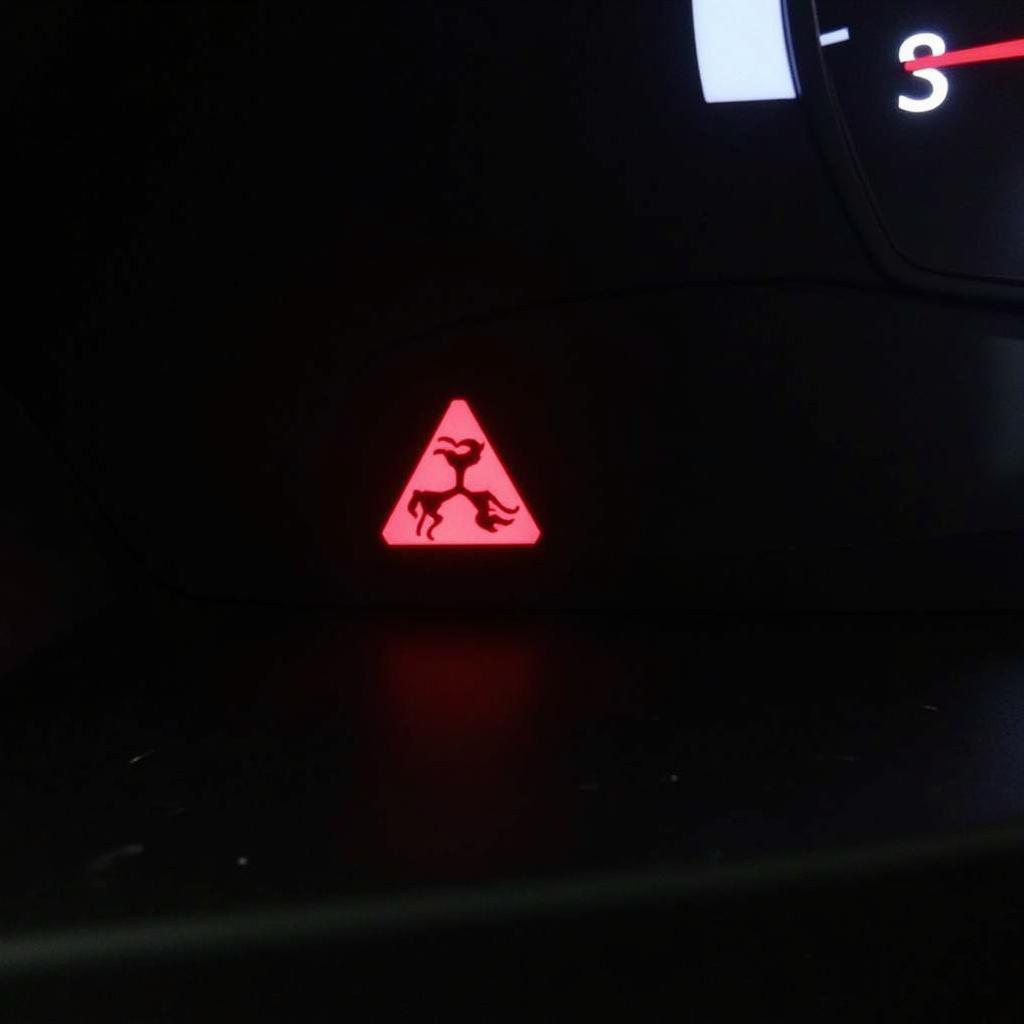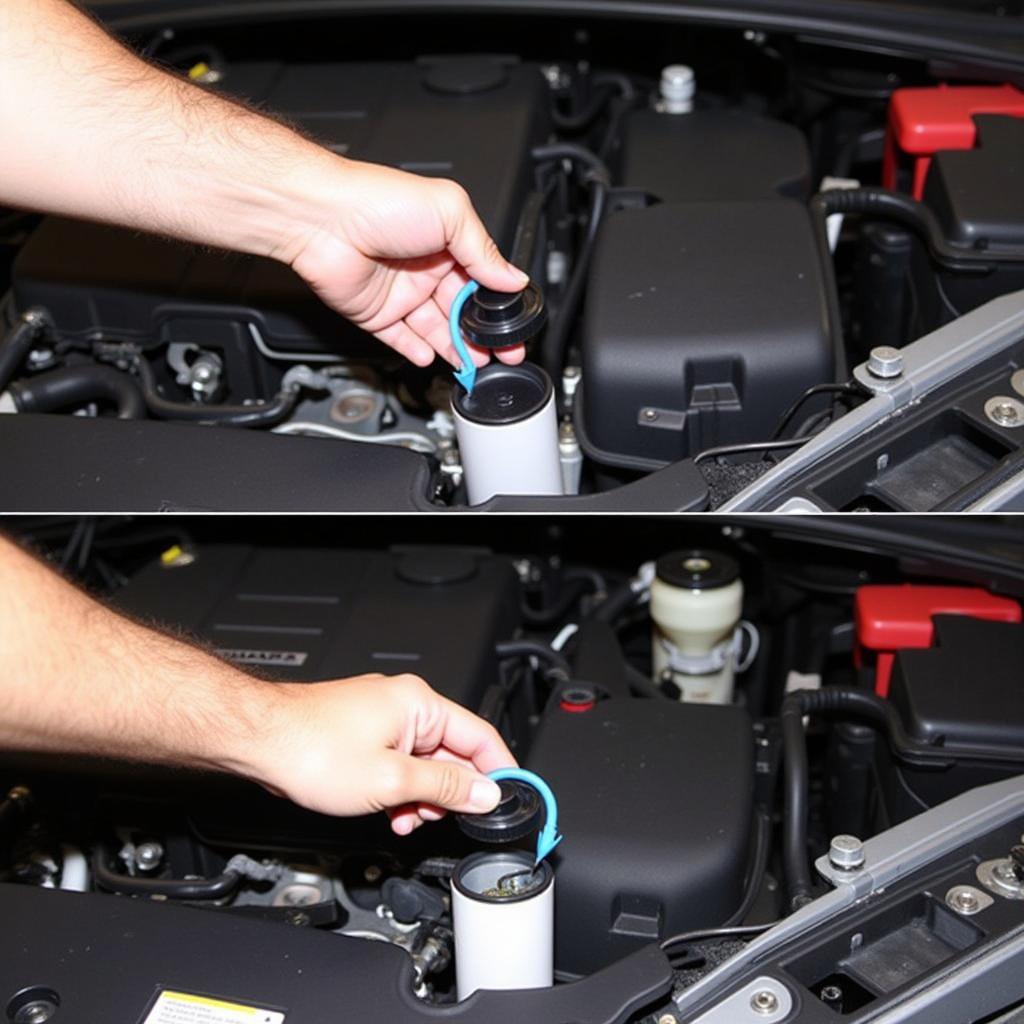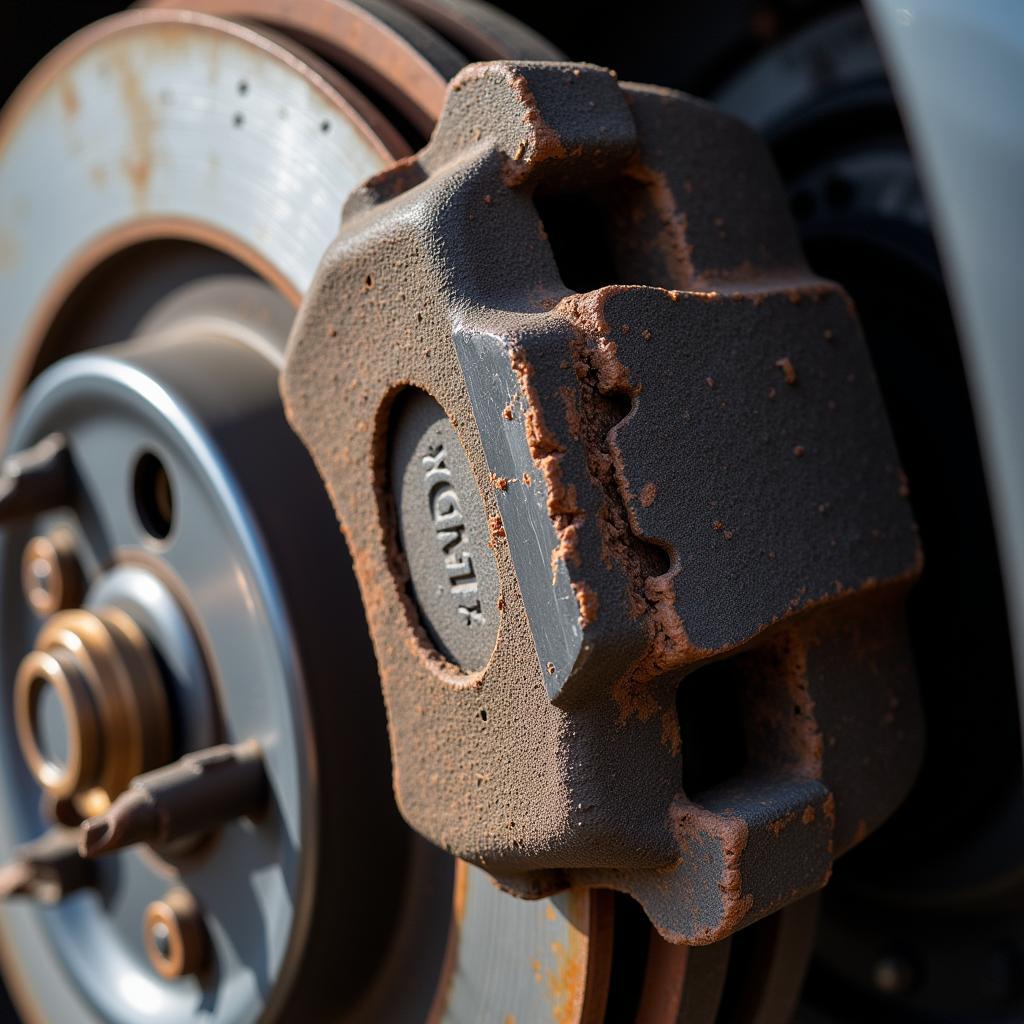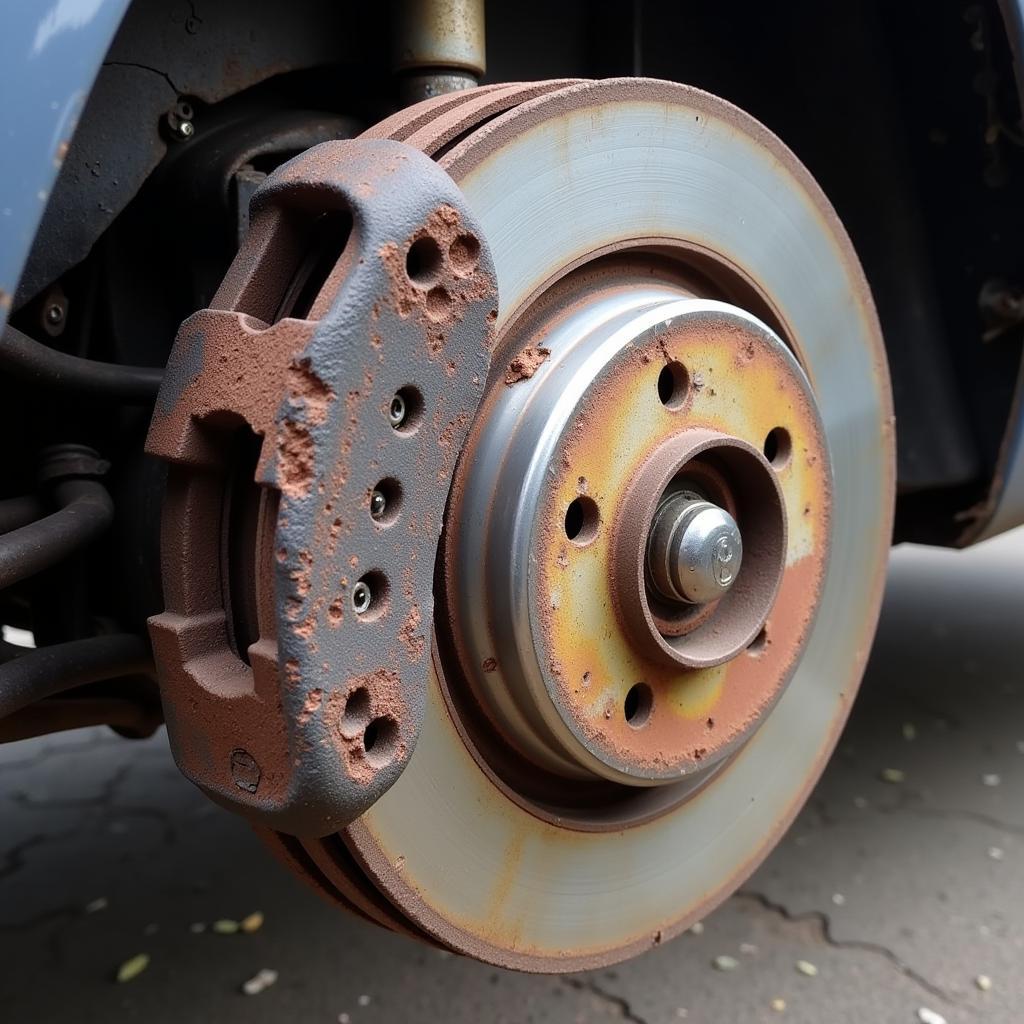If you’re driving a 2016 Honda CRV and see a brake warning light illuminating your dashboard, it’s crucial not to ignore it. This light is your car’s way of signaling a potential issue with your braking system, which directly impacts your safety and that of your passengers. While it can be alarming, understanding what causes this warning light to turn on and the steps you should take can save you from potential hazards and costly repairs down the line.
Understanding the Brake Pad Warning Light
The brake pad warning indicator light is part of your CRV’s sophisticated electronic brake system. Its primary function is to alert you when your brake pads wear down to a point requiring replacement. The system relies on a small sensor embedded within the brake pad itself. As you use your brakes, these pads wear down, and the sensor eventually comes into contact with the brake rotor. This contact triggers the warning light on your dashboard.
 Brake Pad Warning Light Honda CRV
Brake Pad Warning Light Honda CRV
However, it’s essential to remember that the brake pad warning light can indicate problems beyond worn brake pads. Other potential culprits include:
- Low brake fluid: Your CRV, like all vehicles with hydraulic braking systems, requires a sufficient level of brake fluid to function correctly. A leak in the system can lead to a drop in fluid level, triggering the warning light.
- Faulty brake sensor: While designed for durability, the brake pad sensor itself can malfunction. A short circuit, broken wire, or general wear can lead to a false positive, illuminating the warning light even with sufficient brake pad thickness.
- Issues with the ABS (Anti-lock Braking System): The ABS system plays a crucial role in preventing wheel lockup during braking, especially on slick surfaces. A problem within the ABS module or sensors can also trigger the brake warning light.
What to Do When the Brake Pad Warning Light Turns On
- Don’t Panic, but Don’t Ignore It: The first rule is to remain calm. While a red brake warning light suggests a more urgent issue than a yellow one, it’s best to err on the side of caution and address the problem immediately.
- Assess Your Braking Performance: Do you notice any unusual noises like grinding or squealing when applying the brakes? Does your CRV pull to one side while braking? These could indicate severely worn brake pads.
- Check Your Brake Fluid: If possible, safely park your car and inspect the brake fluid reservoir under the hood. Ensure the fluid level is between the minimum and maximum marks.
- Seek Professional Diagnosis: If you suspect any issues beyond worn brake pads, especially if you notice unusual braking behavior or low brake fluid, it’s crucial to have your CRV diagnosed by a qualified mechanic.
 Checking Brake Fluid Honda CRV
Checking Brake Fluid Honda CRV
Importance of Timely Inspection and Repair
Addressing brake system issues promptly is not just about avoiding costly repairs but prioritizing your safety on the road. Here’s why timely inspection and repair are vital:
- Safety First: Your brakes are your vehicle’s most critical safety system. Driving with compromised brakes puts you, your passengers, and other road users at risk.
- Prevent Further Damage: Ignoring a brake problem can often lead to more extensive and expensive damage to other brake components, turning a relatively minor repair into a significant expense.
- Peace of Mind: Addressing the issue and knowing your brakes are in optimal condition provides invaluable peace of mind every time you get behind the wheel.
FAQs
Q: How much does it cost to replace brake pads on a 2016 Honda CRV?
A: The cost can vary depending on factors like location, the mechanic you choose, and the type of brake pads used. However, you can expect to pay between $150 to $300 per axle on average.
Q: Can I drive my Honda CRV with the brake pad warning light on?
A: While you might be able to drive a short distance, it’s strongly advised against it. Driving with compromised brakes is dangerous. Have your car towed to a mechanic for inspection if needed.
Q: How often should brake pads be replaced?
A: There’s no one-size-fits-all answer as driving habits and conditions significantly impact brake pad wear. However, it’s generally recommended to have your brakes inspected every 12,000 miles or annually.
brake pad warning light on honda crv 2016 dashboard symbols
Conclusion
A glowing brake pad warning light in your 2016 Honda CRV should never be taken lightly. By understanding its potential causes and acting swiftly to diagnose and repair the issue, you ensure your safety and that of everyone on the road. Remember, regular maintenance and timely attention to warning signs are key to keeping your CRV running smoothly and safely for years to come.


